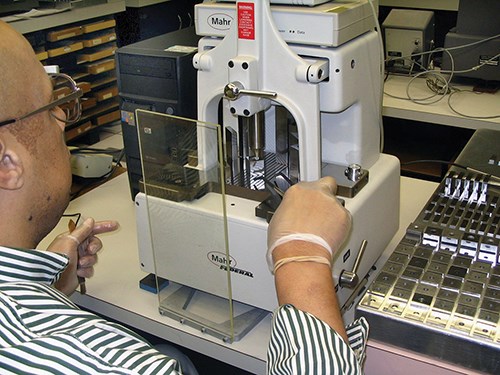Degrees of Performance
Temperature is the single largest source of measurement error. Control it, and your gage should meet all performance criteria.
Having spent the last couple of months hunkered down in freezing temperatures and snow up to my waist, I’ve been constantly reminded of the effects of temperature, not only on people, but on precision measurement.
At this time of year, I frequently get early-morning calls from my sales partners who are anxious to demo a bench or height gage. How long do they have to wait, they want to know, before they can start making accurate measurements with their demo equipment?
Why wait, I ask? Just plug it in and start measuring. Oh, well, there’s just one detail they didn’t mention: the gage was in the back of one of their cars the night before. While they were warm and toasty in their homes, the car was parked outside, where it was a brisk 5˚F below zero. In this case, the gage will be barely capable of movement—almost literally frozen in place—let alone able to give accurate readings. Give it a day, I say, and I think you will be good to go.
Dimensional control is an important part of manufacturing, yet those trying to achieve precision measurements often forget the single largest source of measurement error: temperature.
In most shops, temperatures change over time and space. One part of the shop might be warmer or colder than another, and the temperatures within different areas can even change at different times of the day. As temperatures change, so will the measured values of critical dimensions. And as manufacuring tolerances get tighter, it’s not only important to consider a gage’s ability to resolve to smaller values, but also how temperature may affect your measurement results.
Following are two common examples of how temperature can affect gage performance.
A customer was experiencing a problem with a height gage. Measurements appeared neither accurate nor repeatable. A factory representative noted the problem and arranged to have the gage sent back to the factory for warranty repair. This was not a normal event, as these gages typically are very reliable, and the repair team could not find any problem. Since it met all performance specifications and tested out thoroughly, the gage was returned to the customer.
Soon, the customer again complained that the height gage was not accurate. Again the gage was returned to the factory and inspected. Again no issues were found, and the gage was returned to the customer, this time with a new certification of performance.
For the third time, the customer set up the gage, only to observe the same problems. This time though, a new set of eyes had accompanied the gage on its return to the shop, and these eyes noticed the location and environment in which the gage was used. Although it was being used in a typical shop, the gage was located within the shop’s receiving department, right next to the door of a shipping bay.
After the gage was moved to a different department, farther from and therefore not affected by the fast temperature changes caused by the shipping department’s frequently opening and closing doors, the problem was solved. The gage met all performance criteria.
It may be pretty clear that the larger a part or gage gets, the more it is apt to change with temperature swings. However, it is also true that, if a gage is able to provide very high resolution, it will also be able to pick up the smallest variations in temperature.
In another case, all was going well during a morning demo of a small and very precise length-measuring machine. While not a true “millionth” measuring system, this gage was accurate when the customer and sales rep tested a few of the customer’s gage blocks.
In the afternoon, however, they noted that the gage started drifting high when they measured the same gage blocks. After a frantic call to the factory and routine questioning from the technical reps, they were asked if they wore insulating gloves while handling the blocks. Of course the answer was, “No.”
Here’s what was happening: Between the two users handling the blocks with their hands and standing in front of the gage for six hours, their combined body temperature was having a significant effect on the measurement results that the precise gage was reporting.
After a short break to give the gage and the blocks a chance to stabilize, and with a change in the measuring and handling process, the gage once more performed as expected. And the sales rep scored another successful demo.
Read Next
A History of Precision: The Invention and Evolution of Swiss-Style Machining
In the late 1800s, a new technology — Swiss-type machines — emerged to serve Switzerland’s growing watchmaking industry. Today, Swiss-machined parts are ubiquitous, and there’s a good reason for that: No other machining technology can produce tiny, complex components more efficiently or at higher quality.
Read MoreObscure CNC Features That Can Help (or Hurt) You
You cannot begin to take advantage of an available feature if you do not know it exists. Conversely, you will not know how to avoid CNC features that may be detrimental to your process.
Read MoreEncountering Surface Finishes in the Everyday World
Surface measurement is becoming increasingly important to ensure proper performance of a manufactured product. Advanced surface measurement tools are not only beneficial in the manufacturing industry but also have unconventional applications.
Read More





















